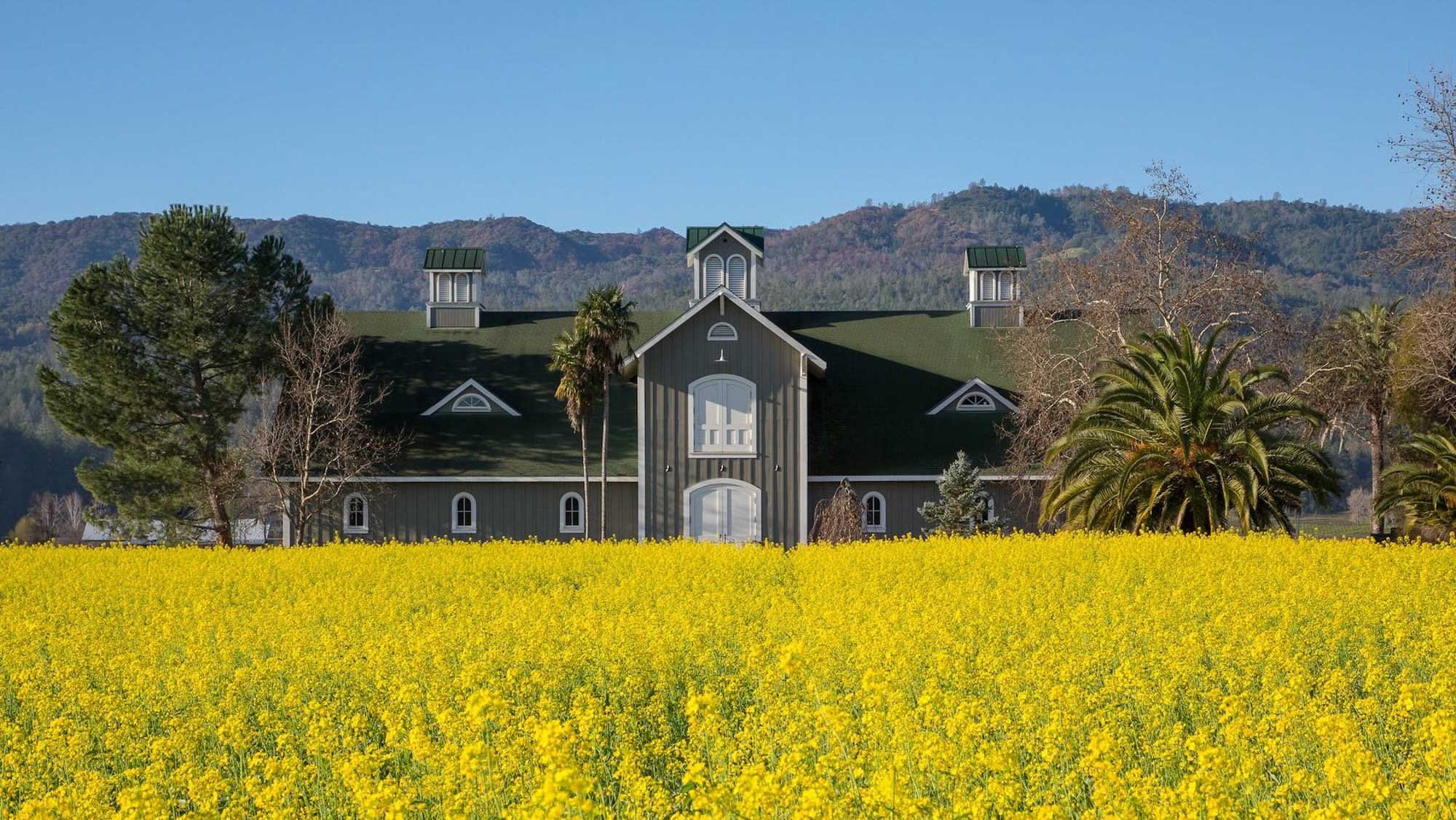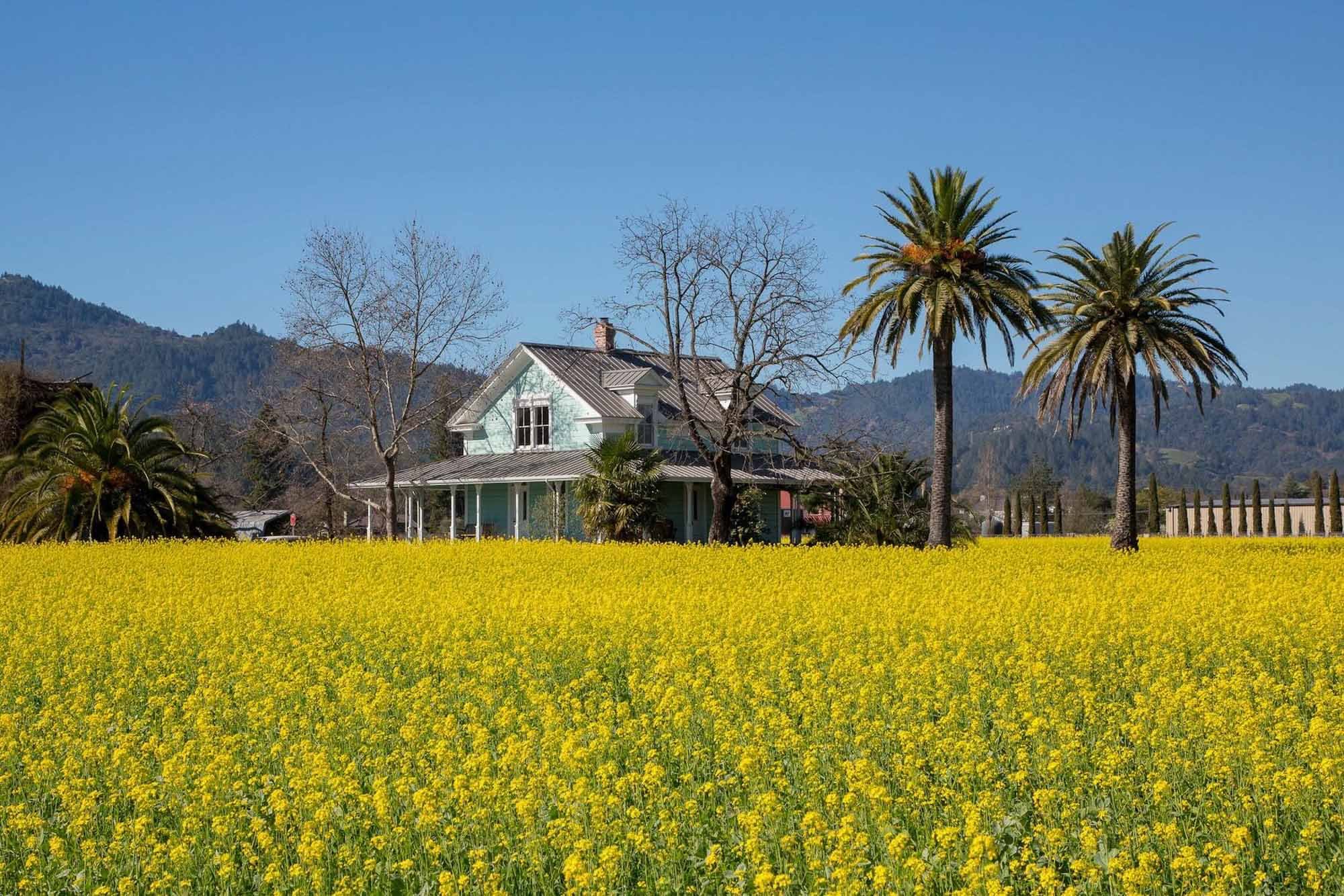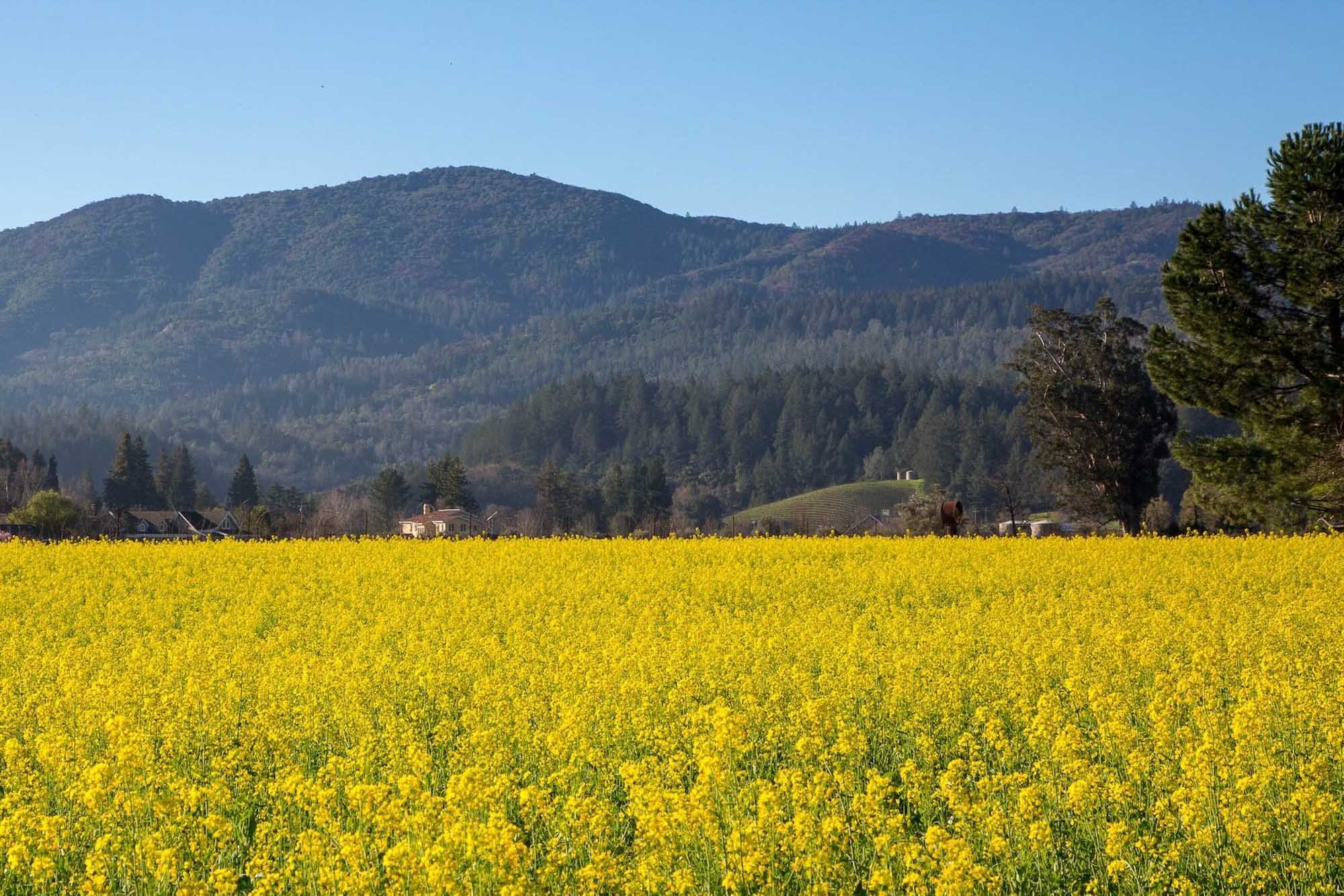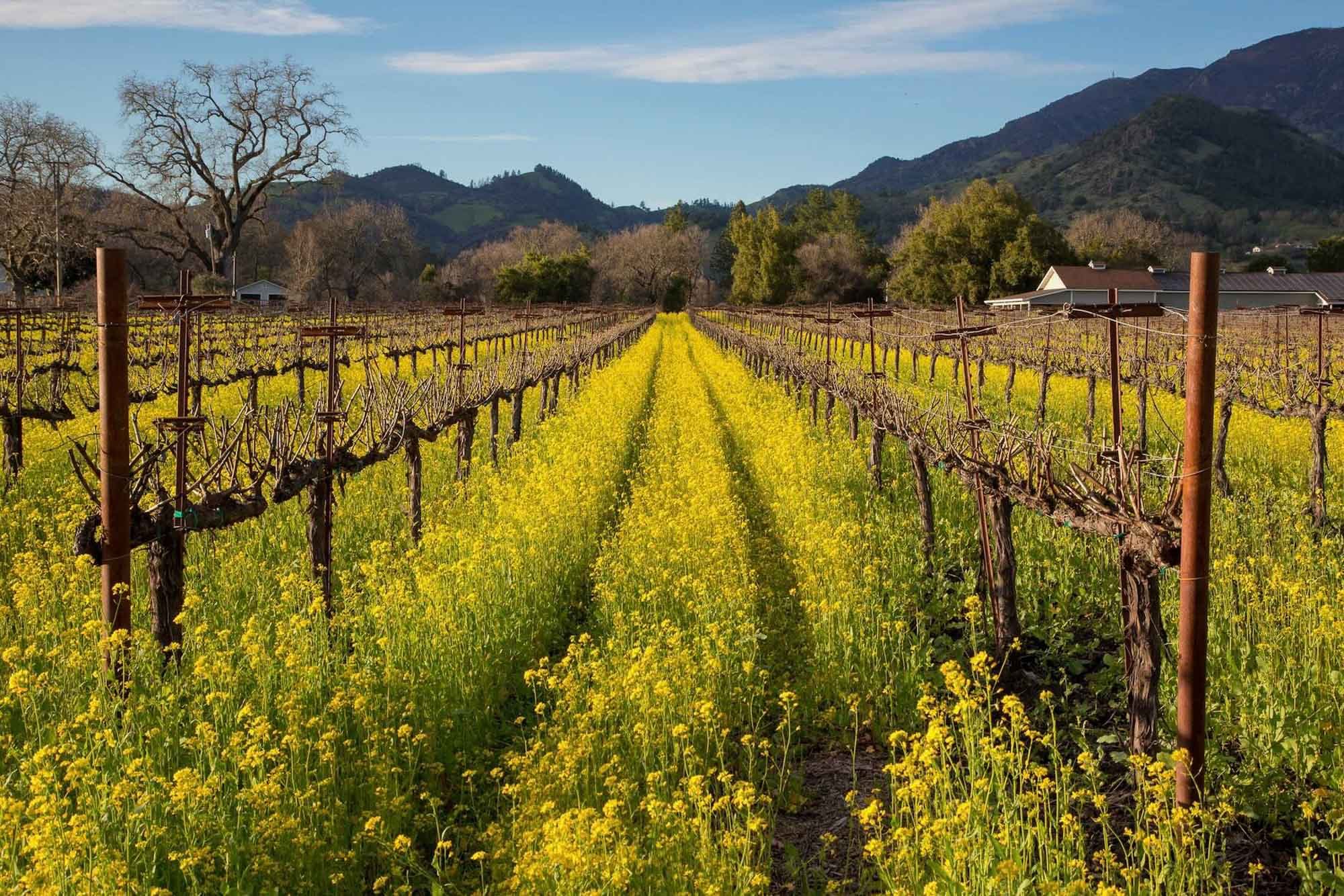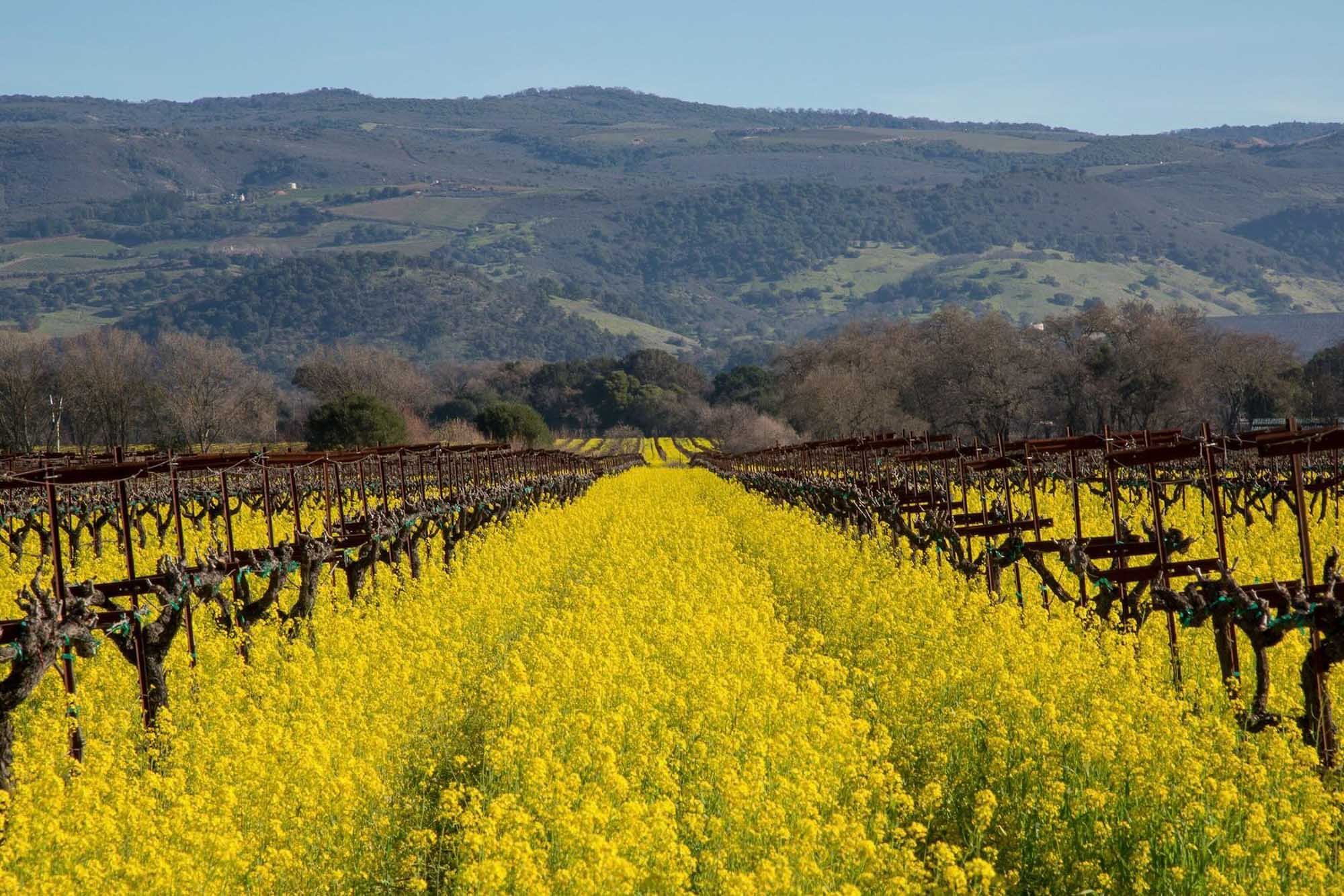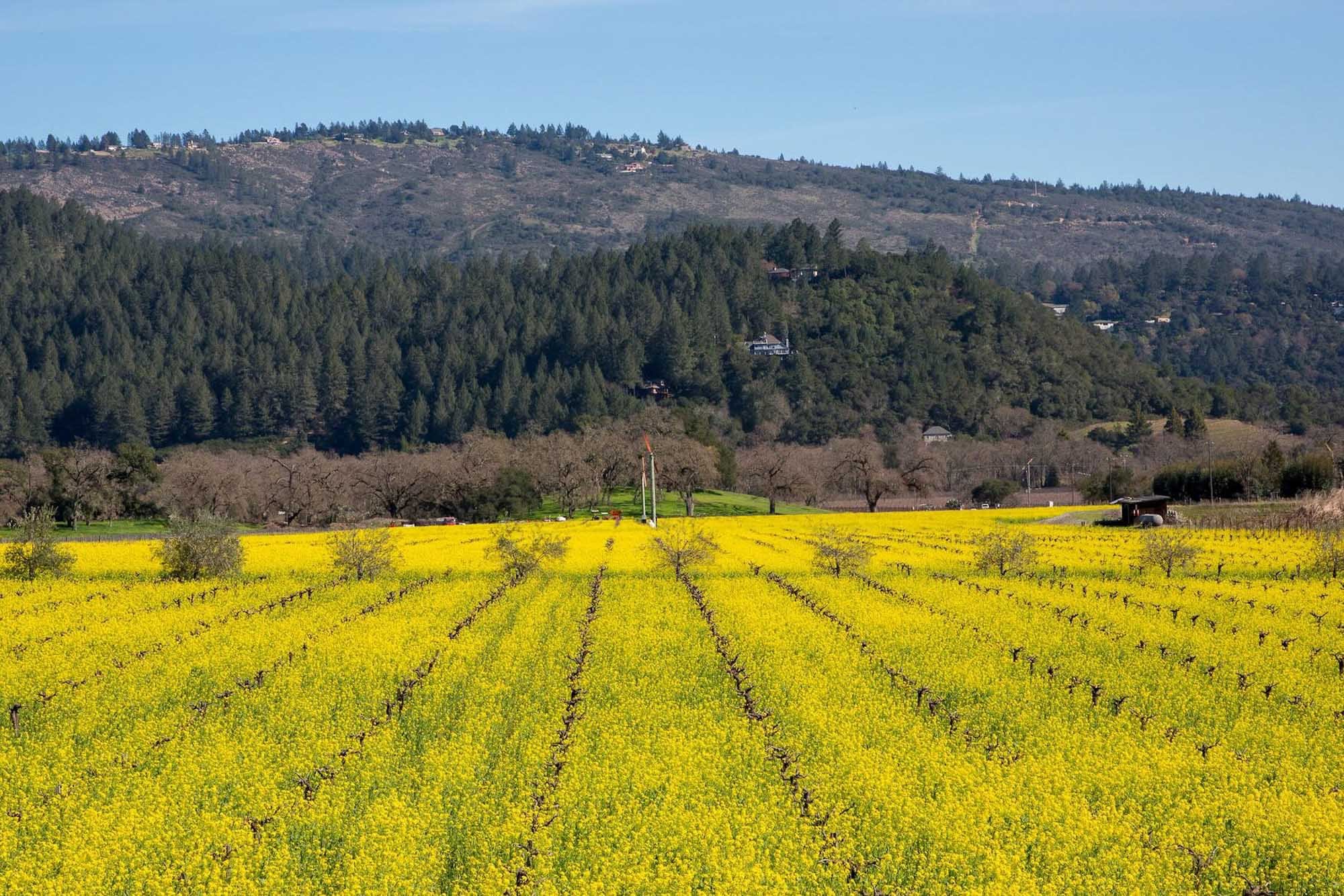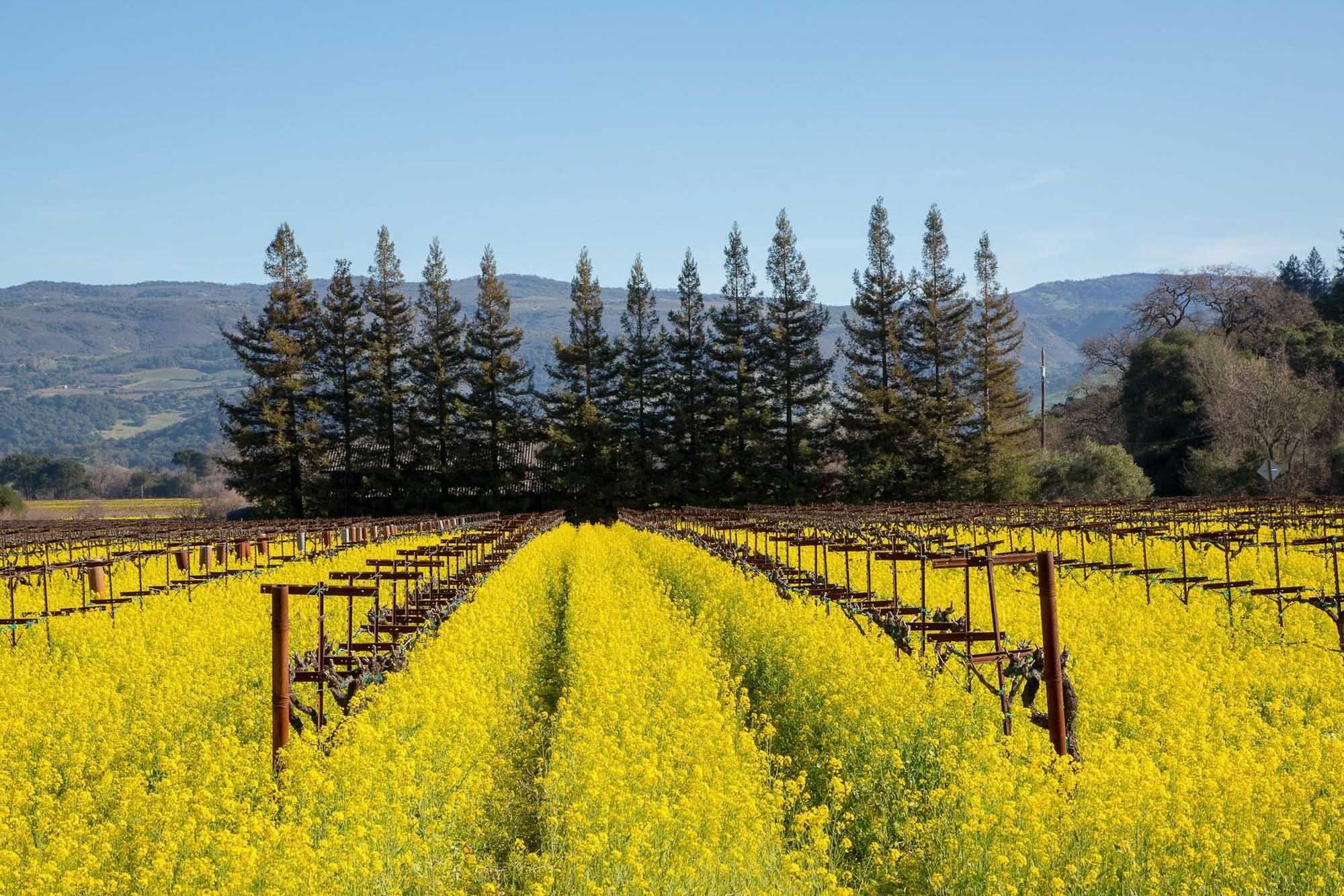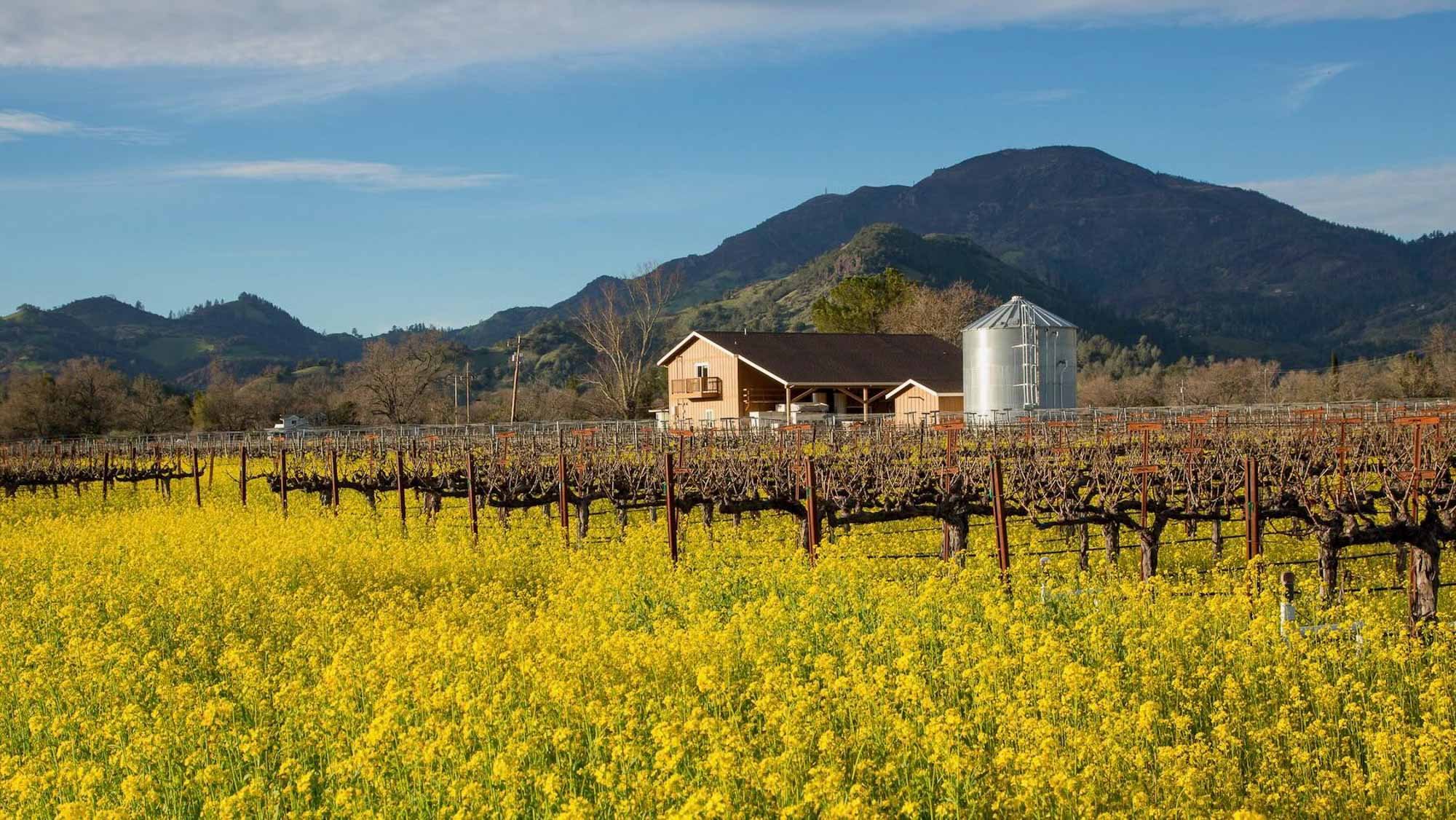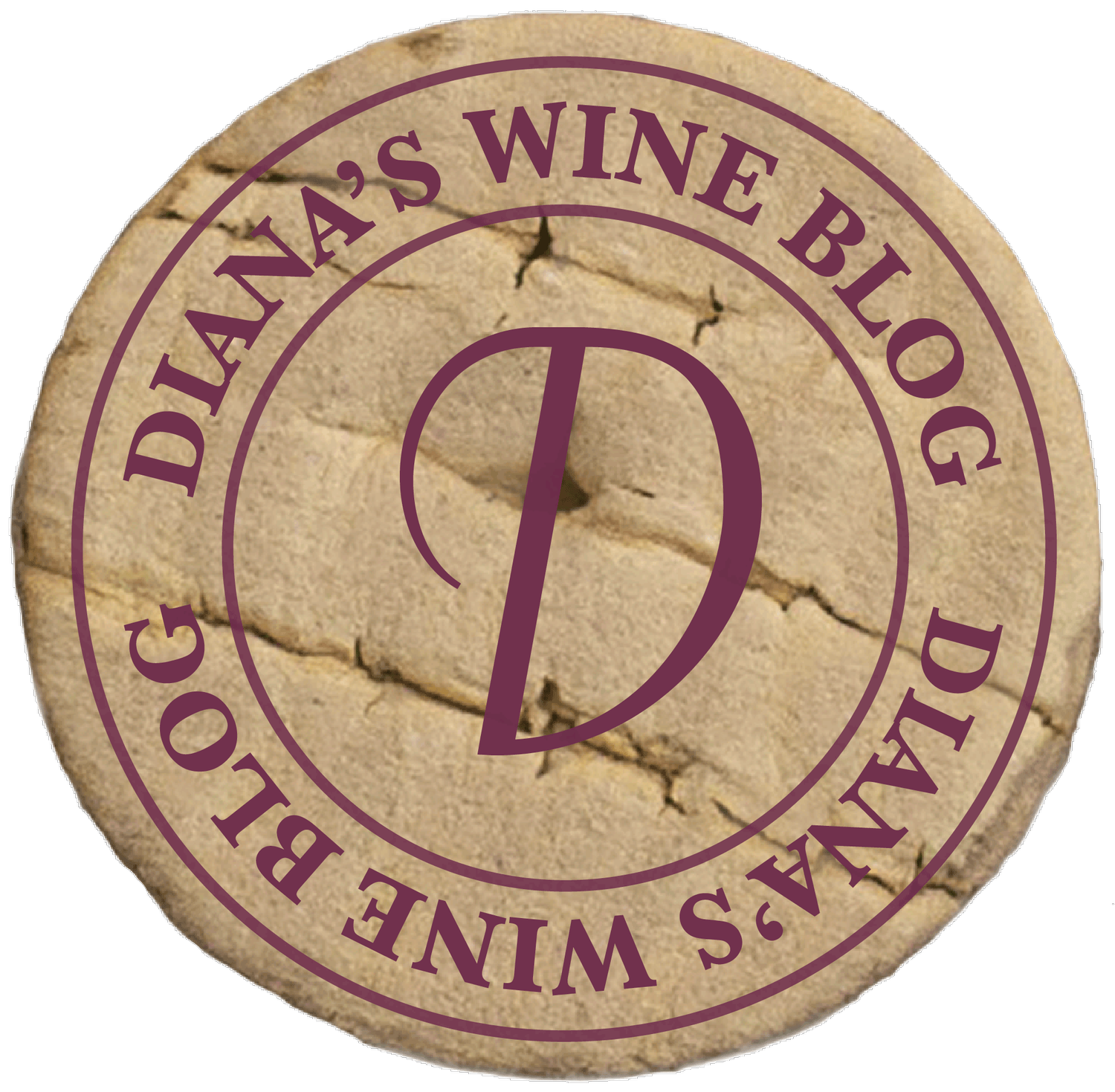Mustard: Not Just a Pretty Face
The Napa Valley is beautiful to visit at any time of the year. Each season has it moments that are amazing. Right now, the vines are “resting” and have been cut back in preparation for the growing season. Temperature changes are what stimulate the growth, and presently it is chilly. Bud break, the initial beginning of growth happens, generally around St. Patrick’s Day. We are still a good month away from that time.
What you will see at this time of the year, which can be amazing, is the vast fields of yellow mustard in the vineyards. Rows and rows of bright yellow flowers fill many of the vineyards and peak around this time of year. Glorious bright yellow that spans acres of trimmed vineyards dot the valley. This is what the vineyard manager terms a cover crop. It is more than just a "pretty face."
Cover crops, and in particular mustard plants, are an integral part of the vineyard management. They provide many important benefits to the growing process and serve the vineyard well.
First up on the list of contributions is weed control. The mustard plants grow so vigorously that they preclude the growth of weeds. Mustard also produces a high level of glucosinolates that kill off many soilborne pathogens, preempting the need for chemical herbicides. This reduces the number of insects that make the vineyard their home. The mustard adds organic matter to the soil. It also helps redistribute nitrogen to the soil and pulls CO2 from the air. And if that isn’t enough – it reduces wind and water erosion. Mustard’s root structure breaks hardpan soils and allows for more new pathways for water. These taproots can range from 2 to 6 feet in length, which reduces wind and water soil erosion. And there is no need to plant mustard. The seeds' production of the plant is remarkably high; there are hundreds of seeds just waiting for the right time to take root and bloom each season.
Right now is the best time to come and see the vineyards, in all their glory, with yellow flowers spanning many, many rows of the valley floor. You now have another insightful way to understand the vineyard management of the wineries you visit. Ask about their philosophy and approach to the use of cover crops. It will be interesting to understand their view. Know that nothing in the valley is accidental in the approach to growing a fabulous grape to make wonderful wine.
Enjoy!
